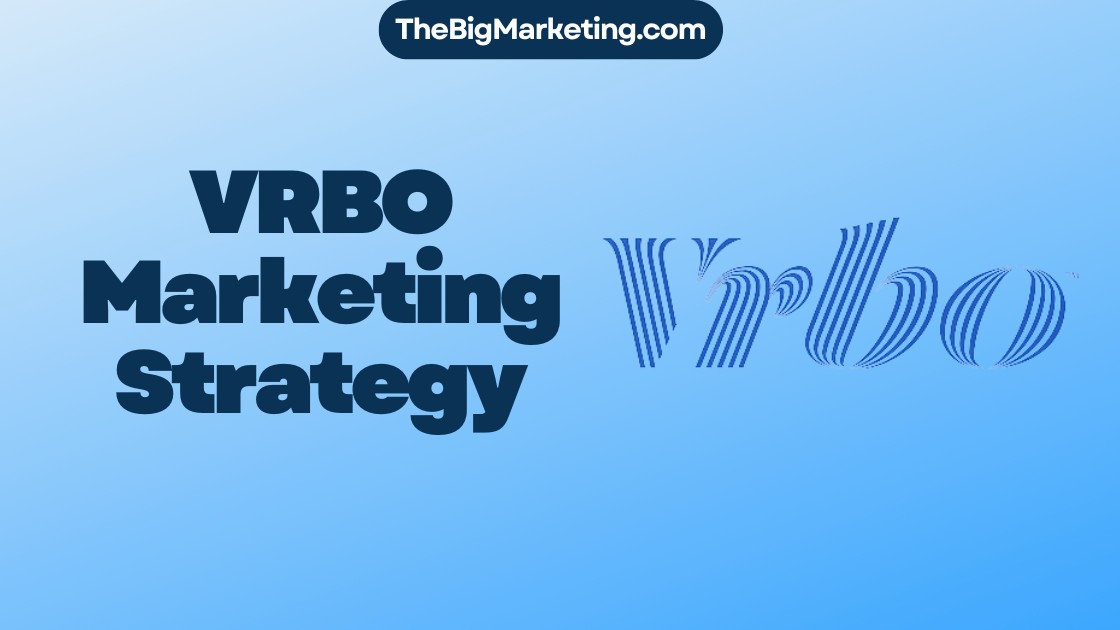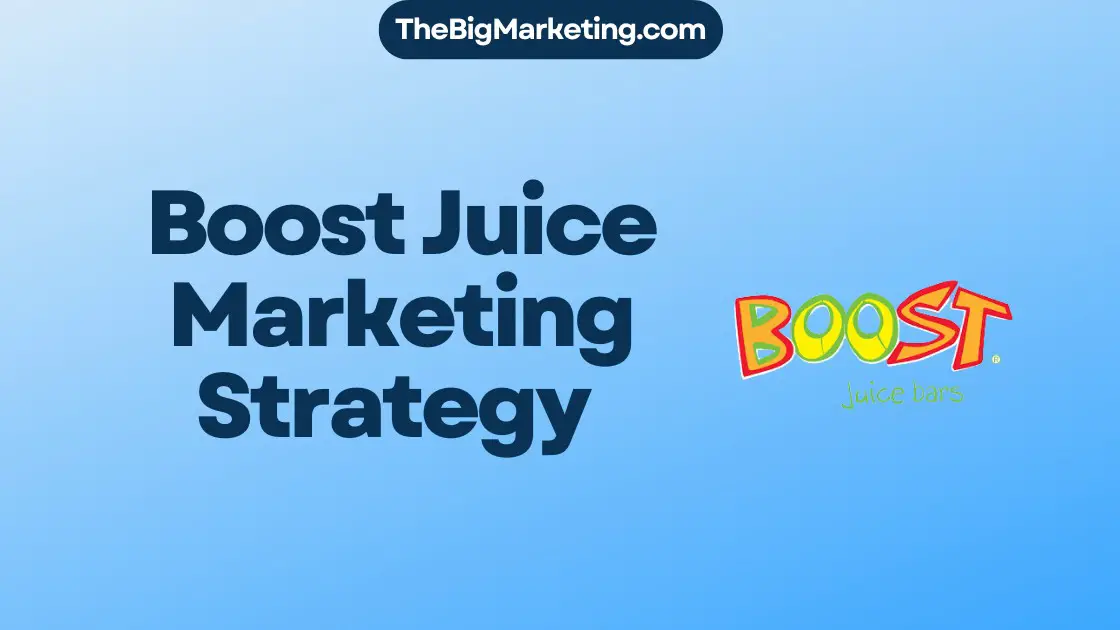In 2024, Albertsons implemented a marketing strategy that aimed to transform the grocery retail space. However, the Federal Trade Commission (FTC) sued to block the proposed merger between Albertsons Companies and Kroger, citing concerns about anticompetitive practices. The FTC argued that the merger would lead to higher prices, lower quality products, and limited choices for consumers. Additionally, the proposed merger threatened the wages, benefits, and working conditions of grocery store workers. Executives from both companies acknowledged the anticompetitive nature of the merger, and their proposed divestiture offering was deemed inadequate by the FTC.
Key Takeaways:
- The FTC filed a lawsuit to block the merger between Albertsons and Kroger, citing concerns about higher prices and diminished product quality.
- The proposed merger also raised concerns about the impact on grocery store workers, including potential wage reductions and degraded working conditions.
- The FTC deemed Albertsons and Kroger’s divestiture offering inadequate, as it did not effectively mitigate the loss of competition.
- The proposed merger would eliminate head-to-head competition between Albertsons and Kroger, leading to higher prices and limited choices for consumers.
- Despite the regulatory challenges, Albertsons launched an omnichannel marketing campaign called “Sincerely, Food” to build emotional connections with customers.
FTC Lawsuit against Albertsons and Kroger Merger
The Federal Trade Commission (FTC) filed a lawsuit to block the merger between Albertsons Companies and Kroger, the largest proposed supermarket merger in U.S. history. The FTC’s action reflects a rigorous competitive analysis in retail marketing and highlights the potential impact of such mergers on grocery retail marketing dynamics.
The FTC argued that the merger would not be beneficial for consumers in terms of grocery retail marketing. It contended that the consolidation of these two major players in the industry could result in higher grocery prices, limiting consumers’ purchasing power and undermining competitive pricing strategies in grocery retail marketing. The potential diminishing of product quality was also a concern raised by the FTC in its analysis of competitive dynamics in the grocery retail marketing landscape.
Additionally, the FTC’s lawsuit considered the potential consequences for grocery store workers, taking into account competitive analysis in retail marketing in terms of wages, benefits, and working conditions. It expressed concern about the possibility of lower wages, diminished benefits, and worsened working conditions for employees within the merged entity, potentially affecting the overall job market in the grocery retail marketing sector.
The substantial impact of the merger on grocery retail marketing spurred a bipartisan group of attorneys general from nine states to back the FTC’s lawsuit, further providing support for the competitive analysis in retail marketing that underpinned the regulatory action.
Competitive Analysis in Retail Marketing
In the context of the Albertsons and Kroger merger, competitive analysis in retail marketing played a crucial role in the FTC’s assessment of the potential outcomes. This analysis involves evaluating the competitive landscape, understanding the strategies of major players, and assessing the implications of industry consolidation on consumers, workers, and the overall market. The regulatory response to the merger demonstrates the significance of competitive analysis in shaping business decisions and ensuring fair and sustainable competition within the grocery retail marketing sector.
Inadequate Divestiture Offering by Albertsons and Kroger
To address antitrust concerns, Albertsons and Kroger proposed divesting several hundred stores and other assets to C&S Wholesale Grocers. However, the Federal Trade Commission (FTC) deemed this divestiture offering inadequate for mitigating the loss of competition in the grocery retail marketing landscape. The divestiture package consisted of disconnected stores, banners, brands, and assets, which the FTC argued would not be sufficient to address the concerns raised by the proposed merger.
The FTC contended that the divestitures failed to include all the necessary resources and capabilities for C&S Wholesale Grocers to effectively compete against the combined might of Albertsons and Kroger. By acquiring a fragmented set of assets, rather than a cohesive strategic package, C&S would not have the means to offer a robust competitive challenge to the merged entity in the grocery retail marketing space.
To illustrate the inadequacy of the proposed divestitures, we present the following table:
| Divested Stores and Assets | FTC’s Assessment |
|---|---|
| Store A | Inadequate impact on competition due to its isolated location |
| Store B | Insufficient customer base and revenue to sustain robust competition |
| Brand X | Lack of brand recognition and market share to pose a significant competitive threat |
| Asset Y | Does not provide the necessary capabilities to effectively compete against the merged entity |
The table clearly demonstrates the fragmented nature of the proposed divestiture offering and highlights the FTC’s concerns regarding the preservation of competition in the grocery retail marketing sector. The divestitures comprised disconnected entities lacking the necessary scale, market share, and resources to challenge the dominant positions of Albertsons and Kroger.
This image illustrates the competitive landscape in the grocery retail marketing industry, emphasizing the need for substantial divestitures to foster a level playing field and maintain healthy market competition.
Impact on Consumers
The proposed merger between Albertsons and Kroger has significant implications for consumers in the grocery retail industry. Currently, both companies are engaged in fierce competition, striving to offer customers fresher produce, higher quality products, improved private label offerings, and enhanced in-store services. However, if the merger goes through, this head-to-head competition would be eliminated, leading to potential negative consequences for consumers.
One of the main concerns raised by the Federal Trade Commission (FTC) is that the merger could result in higher grocery prices. With less competition in the market, the incentive for price competition may diminish, allowing the merged entity to potentially increase prices without fear of losing customers. This would directly impact consumers’ wallets, making grocery shopping more expensive.
In addition to higher prices, the merger could also compromise product quality. The current competition drives both Albertsons and Kroger to continually improve their product offerings, ensuring that customers have access to higher quality products. However, with reduced competition, there may be less incentive for the merged entity to prioritize quality, potentially leading to a decline in the overall quality of products available.
Furthermore, the merger could result in fewer choices for consumers. Albertsons and Kroger both operate a range of grocery store banners, providing shoppers with a variety of options when it comes to their grocery shopping preferences. However, if the two companies merge, certain banners may be divested, and some stores could be closed. This reduction in choice could limit consumers’ options and potentially restrict where they can shop for groceries.
To summarize, the proposed merger between Albertsons and Kroger could have a significant impact on consumers. It could lead to higher grocery prices, reduced product quality, and fewer choices for grocery shopping. These potential consequences highlight the importance of competition and the need for effective promotional strategies in the grocery retail marketing industry to ensure that consumers have access to affordable, high-quality products and a diverse range of options for their grocery needs.
Impact on Workers
When considering the potential merger between Albertsons and Kroger, it is crucial to assess the impact it would have on the workers in the grocery retail industry. As the two largest employers of union grocery labor in the United States, both companies actively compete against each other to attract and retain workers, resulting in improved employment terms for union grocery workers.
However, if the proposed merger were to go through, the combined entity would have increased leverage over workers and their unions. This could potentially lead to lower wages, reduced benefits, and degraded working conditions. Furthermore, the ability of union grocery workers to negotiate better terms through actions like boycotts or strikes could be weakened.
Challenges for Union Grocery Workers
The potential merger between Albertsons and Kroger could have significant implications for union grocery workers. Here are some key challenges they could face:
- Lower wages: With the combined entity’s increased bargaining power, workers may find it more difficult to secure wage increases that reflect their contributions and the increasing cost of living.
- Reduced benefits: The merger could result in cost-cutting measures that may lead to a reduction in the benefits offered to union grocery workers, such as healthcare coverage and retirement plans.
- Degraded working conditions: As the merged entity seeks to optimize operations and increase efficiency, there may be pressure to cut corners, potentially leading to compromised working conditions and increased workloads for employees.
The Impact on Union Negotiations
One of the key concerns stemming from the proposed merger is its potential to weaken the bargaining power of union grocery workers. Union negotiations, such as those aimed at improving working conditions and securing better benefits, could become more challenging with a larger, more powerful entity. The ability of workers to exert influence and achieve favorable outcomes through collective action may be diminished, impacting their overall well-being.
Customer Loyalty Programs and Branding Strategies for Grocery Chains
In the face of these concerns, it becomes increasingly important for grocery chains like Albertsons and Kroger to focus on effective customer loyalty programs and branding strategies. Building a strong brand that resonates with customers can help these companies differentiate themselves, attract loyal customers, and maintain competitive advantage in the market.
Customer loyalty programs, in particular, play a vital role in retaining and nurturing customer relationships. By offering rewards, personalized experiences, and exclusive benefits, grocery chains can foster long-term loyalty and encourage repeat purchases. These programs provide an opportunity for companies to collect valuable customer data, enabling them to tailor their offerings and marketing tactics to better meet customer needs.
| Benefits of Customer Loyalty Programs | Examples |
|---|---|
| Enhanced customer retention and repeat purchases | Albertsons’ Just for U program |
| Increased customer engagement and satisfaction | Kroger’s Kroger Plus Rewards |
| Opportunity for targeted marketing and personalized offers | Safeway’s Club Card |
Branding strategies for grocery chains should focus on creating a distinct and compelling image in the minds of consumers. This can be achieved by emphasizing unique selling propositions, such as high-quality products, affordable prices, and a commitment to customer service. Effective branding strategies not only help grocery chains stand out from the competition but also foster trust and loyalty among consumers.
In summary, the potential merger between Albertsons and Kroger could have significant implications for union grocery workers, including the potential for lower wages, reduced benefits, and degraded working conditions. To navigate these challenges, it becomes crucial for grocery chains to implement effective customer loyalty programs and branding strategies that differentiate them from competitors and build strong relationships with customers.
Albertsons’ Omnichannel Marketing Campaign
Despite the regulatory challenges, Albertsons has embraced the power of digital advertising for supermarkets and launched an innovative omnichannel marketing campaign called “Sincerely, Food.” This campaign serves as a powerful tool for the company to strengthen connections with shoppers and create lasting emotional bonds.
The main objective of the “Sincerely, Food” campaign is to associate Albertsons’ diverse range of products with key moments in customers’ lives. By tapping into the emotional aspect of food, Albertsons aims to become more than just a grocery store; it aims to become a part of customers’ cherished memories surrounding meals and celebrations.
Albertsons employs a multifaceted approach to reach its target audience. It utilizes a variety of digital properties, traditional media channels, and social media platforms to deliver food-focused messages to shoppers. Whether it’s through engaging website content, eye-catching television spots, or interactive social media campaigns, Albertsons ensures that its message resonates with customers through every possible channel.
The Power of Omni-Channel Marketing
The “Sincerely, Food” campaign takes advantage of the omni-channel marketing strategy, which seamlessly integrates multiple touchpoints to create a unified brand experience. This approach allows Albertsons to engage with customers at different stages of their purchasing journey, whether they are browsing online, visiting a physical store, or scrolling through their social media feeds.
This digital-centric approach not only enhances customer convenience but also fosters customer loyalty. By providing a cohesive experience across various channels, Albertsons ensures that customers stay connected and engaged with the brand, regardless of how they choose to interact with it.
Furthermore, the seamless integration of digital advertising and in-store signage enables Albertsons to personalize its messaging and promotions. By leveraging customer data and analytics, Albertsons can tailor its offerings to individual preferences, increasing the likelihood of conversion and customer satisfaction. This level of personalization sets Albertsons apart in the highly competitive food industry.
The “Sincerely, Food” campaign brings together the best of both digital and traditional marketing techniques. By strategically utilizing various channels and touchpoints, Albertsons successfully creates a cohesive and engaging brand experience for shoppers. Whether through captivating commercials, interactive social media campaigns, or personalized in-store promotions, Albertsons goes above and beyond to connect with its customers, leaving a lasting impression in their minds.
Building Positive Perception and Emotional Connection
As part of its comprehensive marketing strategy, Albertsons is focusing on building a positive perception of its grocery stores and establishing an emotional connection with its customers through the “Sincerely, Food” campaign. The campaign aims to highlight the high-quality assortment of fresh produce, meats, and seasonal ingredients available at Albertsons stores. By emphasizing the unique history and local identity of each Albertsons banner, the company strives to create a sense of belonging and familiarity among its customers.
One of the key elements of the campaign is the creation of landing pages on Albertsons’ websites. These landing pages provide personal descriptions of the services and offerings available at each store, emphasizing the company’s commitment to quality and community. Through detailed and engaging content, Albertsons aims to showcase the exceptional in-store experience it offers and differentiate itself from competitors.
By utilizing supermarket marketing tactics that focus on branding strategies for grocery chains, Albertsons seeks to build a strong relationship with its customers. The aim is to create an emotional connection that goes beyond price and product, building customer loyalty and trust in the brand.
Highlighting the Unique History and Local Identity
Albertsons recognizes the importance of connecting with customers on a deeper level by highlighting the unique history and local identity of each of its banner chains. This approach allows customers to feel a sense of pride and familiarity when shopping at their local Albertsons store. By showcasing the story and heritage behind each banner, the company aims to foster a sense of community and differentiate itself from other grocery chains.
The “Sincerely, Food” campaign incorporates storytelling and visual elements to bring the history and local identity to life. Through digital advertising and in-store signage, customers are exposed to rich narratives that celebrate the heritage of their neighborhood store.
For example, Albertsons’ Vons banner in Southern California uses images and stories that highlight its deep roots in the community, showcasing its commitment to serving customers for generations. Similarly, the Safeway banner in the Pacific Northwest emphasizes its connections to local farmers and the region’s natural beauty.
By focusing on these distinct characteristics, Albertsons aims to create a positive perception and emotional attachment to its stores, making customers more likely to choose Albertsons for their grocery shopping needs.
| Banner Chain | Unique History and Local Identity |
|---|---|
| Vons | Deep roots in Southern California, serving the community for generations |
| Safeway | Connections to local farmers and the natural beauty of the Pacific Northwest |
Multimedia Approach of the Campaign
The “Sincerely, Food” campaign by Albertsons employs a multimedia approach to effectively engage shoppers and create a lasting impact. Through a combination of visual storytelling and interactive content, the campaign captures the attention and interest of the target audience.
One of the key elements of this multimedia approach is the use of TikTok-like videos. These videos showcase shoppers interacting with various food items, store employees, and Albertsons banner logos. The videos provide captivating close-ups of the products, highlighting their quality and freshness. Additionally, scenes of families enjoying food together evoke a sense of joy and togetherness, resonating with the audience.
Albertsons leverages digital properties, traditional media channels, and social media platforms to distribute and promote the campaign. This omni-channel approach ensures that the food-focused messages reach a wide audience and maximize the campaign’s impact. Whether through targeted online advertising, in-store signage, or engaging social media posts, Albertsons utilizes various mediums to communicate its brand message effectively.
The supermarket marketing tactics employed by Albertsons highlight the importance of embracing digital advertising and using technology to connect with consumers. By adopting a multimedia approach, Albertsons leverages the power of visual content and the widespread reach of digital platforms to engage shoppers and create lasting brand impressions.
Overall, the “Sincerely, Food” campaign exemplifies the effectiveness of a multimedia approach in supermarket marketing. It effectively showcases the quality and freshness of Albertsons’ products while establishing an emotional connection with the target audience. By leveraging digital advertising and embracing innovative marketing tactics, Albertsons demonstrates its commitment to delivering a memorable and engaging shopping experience.
Albertsons’ Focus on Public Image
Albertsons recognizes the importance of public perception and strives to build a positive image as a leading grocery chain. The company’s marketing efforts, including the “Sincerely, Food” campaign, are integral to this broader initiative. By showcasing Albertsons’ commitment to fresh produce, high-quality products, and community engagement, the company aims to strengthen its relationship with customers and highlight its role in their lives.
Albertsons understands that branding strategies for grocery chains play a crucial role in shaping consumer perception. Through its marketing campaigns, the company emphasizes its dedication to offering a diverse range of fresh, nutritious, and sustainably sourced products. By consistently delivering on its promises, Albertsons strives to position itself as a trusted provider of quality groceries.
Moreover, Albertsons places a strong emphasis on community engagement. The company actively supports local farmers, suppliers, and charitable organizations. By partnering with these entities, Albertsons demonstrates its commitment to creating a positive impact on the communities it serves.
The “Sincerely, Food” campaign encapsulates Albertsons’ efforts to foster emotional connections with customers. By highlighting the company’s values, commitment to customer satisfaction, and dedication to promoting healthy lifestyles, Albertsons aims to build a sense of trust and loyalty.
Through its branding strategies, Albertsons aims to position its stores as more than just a place to buy groceries. The company envisions its stores as central to people’s wellbeing, offering fresh and nutritious options that contribute to a healthy lifestyle. By presenting itself as an essential part of customers’ lives, Albertsons aims to build long-lasting relationships and maintain its position as a trusted grocery chain.
Albertsons’ Previous Marketing Initiatives
The “Sincerely, Food” campaign follows Albertsons’ launch of the “Sincerely Health” digital platform, which focused on promoting the company’s stores as crucial to people’s health and wellbeing. The platform provided shoppers with a “health score” and rewarded them for making lifestyle improvements. These marketing initiatives highlight Albertsons’ commitment to connecting with customers on multiple levels and positioning its stores as more than just a place to buy groceries.
Campaign Comparison
| Campaign Name | Objective | Tactics |
|---|---|---|
| Sincerely, Health | Promote health and wellbeing | – Provide shoppers with a “health score” – Reward customers for lifestyle improvements |
| Sincerely, Food | Establish emotional connections and positive perception | – Showcase fresh produce, meats, and seasonal ingredients – Highlight unique history and local identity – Create landing pages emphasizing quality and community |
The “Sincerely, Health” campaign aimed to improve customers’ overall health and wellbeing by providing them with personalized insights and rewards. By encouraging healthier lifestyle choices, Albertsons positioned itself as a brand that cares about its customers’ long-term health. This previous marketing initiative laid the foundation for the subsequent “Sincerely, Food” campaign, which focused on establishing emotional connections and positively influencing customers’ perceptions.
The “Sincerely, Food” campaign builds on the success of its predecessor and reinforces Albertsons’ commitment to connecting with customers beyond the transactional aspect of grocery shopping. By showcasing the company’s wide range of fresh produce, meats, and seasonal ingredients, the campaign aims to evoke positive emotions associated with food and create lasting memories. Furthermore, the focus on local history and identity enhances the sense of community, making Albertsons’ stores more than just a place to buy groceries.
Through its previous marketing initiatives, Albertsons demonstrates its dedication to engaging customers through diverse channels. By integrating technology-driven platforms and emotional appeals, the company positions itself as a trusted partner in customers’ journey towards better health and a positive grocery shopping experience.
Regulatory Challenges and Merger Plans
Despite the Federal Trade Commission’s (FTC) lawsuit to block the merger between Albertsons and Kroger, Albertsons remains steadfast in advancing its growth strategy. The company continues to plan for the merger, which would result in a substantial expansion of its store network and employee base. This merger holds strategic importance for Albertsons in navigating the competitive landscape of the grocery retail industry.
Competitive Analysis in Retail Marketing
Albertsons’ perseverance in pursuing the merger with Kroger underscores the company’s commitment to staying competitive in the dynamic retail market. By joining forces, the two grocery giants aim to leverage their combined resources and expertise to enhance their market position and better serve their customers. Such a merger would enable Albertsons to achieve economies of scale and capitalize on synergies to drive growth and innovation.
Grocery Retail Marketing
The merger between Albertsons and Kroger presents a compelling case study for grocery retail marketing. It highlights the strategies employed by major players in the industry to maintain their market share and expand their operations. By navigating the regulatory challenges and staying focused on their growth plans, Albertsons demonstrates the resilience and adaptability required to succeed in a fiercely competitive market.
The table below provides an overview of the key merger plans and their potential impact on Albertsons’ retail marketing strategy:
| Merger Plans | Potential Impact on Retail Marketing Strategy |
|---|---|
| Expansion of store network | Increased market coverage and reach |
| Expanded employee base | Enhanced manpower and expertise for marketing initiatives |
| Economies of scale | Cost efficiencies, enabling competitive pricing and promotional strategies |
| Access to combined resources | Greater capabilities for product development and innovation |
While the regulatory challenges posed by the FTC’s lawsuit are significant, Albertsons’ determination to pursue the merger demonstrates its ambition to gain a competitive edge in the grocery retail market. Through strategic differentiation and innovative marketing tactics, Albertsons strives to solidify its position as a leading player in the industry.
Conclusion
Albertsons’ marketing strategy in 2024 faced significant obstacles due to the Federal Trade Commission’s (FTC) lawsuit against its proposed merger with Kroger. Despite these challenges, the company remained committed to its growth strategy and focused on improving its public image.
The “Sincerely, Food” campaign played a crucial role in building connections with shoppers and creating a positive perception of Albertsons’ products and stores. By highlighting its commitment to fresh produce, high-quality products, and community engagement, Albertsons aimed to position its stores as integral to people’s lives.
This case study of Albertsons’ marketing strategy in 2024 sheds light on the complex dynamics of the grocery retail industry and the importance of competitive differentiation through effective supermarket marketing tactics. Despite the regulatory hurdles, Albertsons persevered, reaffirming its commitment to providing a unique and valuable shopping experience for consumers.





